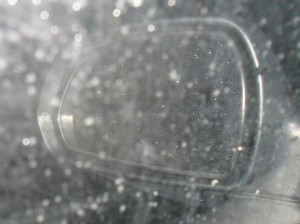 If you’ve ever skidded while driving down a wet road but didn’t lose total control, you’ve probably experienced hydroplaning. Your Toyota of Dothan dealership wants you to understand the basics of this and how you can avoid it to keep safe on the road.
If you’ve ever skidded while driving down a wet road but didn’t lose total control, you’ve probably experienced hydroplaning. Your Toyota of Dothan dealership wants you to understand the basics of this and how you can avoid it to keep safe on the road.
Hydroplaning Explained
Hydroplaning is known as the sliding or skidding of car tires over a wet surface. It happens when a tire encounters more water than it is capable of scattering. The water pressure in the front wheel pushes water underneath the tire, and then the tire is separated from the surface of the road by a thin film of water, losing traction. This results in a loss of braking, steering and power control.
Conditions for Hydroplaning
Hydroplaning can happen on any wet road, but the first ten minutes of a light rain are potentially the most dangerous.
When this light rain combines with oil residues from the road, this makes slippery conditions which can make vehicles, especially ones moving over 35 mph, to hydroplane. This is possibly a deadly combination for you and those around you.
How to Avoid Hydroplaning
The tips below will help you to avoid hydroplaning.
- Replace and rotate tires when needed
- Keep your tires inflated properly
- Keep away from standing water and puddles
- Slow down when the road conditions are wet. The faster you drive the harder it will be for your tires to scatter the water.
- Try driving in tire tracks left by other cars ahead of you
- Don’t drive in the outer lanes where the water usually accumulates
- Drive in a lower gear
- Do not use cruise control
- Try to not make any quick or sharp turns
- Avoid hard braking



![[Facebook]](https://www.toyotaofdothan.com/blogs/409/wp-content/plugins/bookmarkify/facebook.png)
![[LinkedIn]](https://www.toyotaofdothan.com/blogs/409/wp-content/plugins/bookmarkify/linkedin.png)
![[Twitter]](https://www.toyotaofdothan.com/blogs/409/wp-content/plugins/bookmarkify/twitter.png)
![[Yahoo!]](https://www.toyotaofdothan.com/blogs/409/wp-content/plugins/bookmarkify/yahoo.png)
![[Email]](https://www.toyotaofdothan.com/blogs/409/wp-content/plugins/bookmarkify/email.png)
